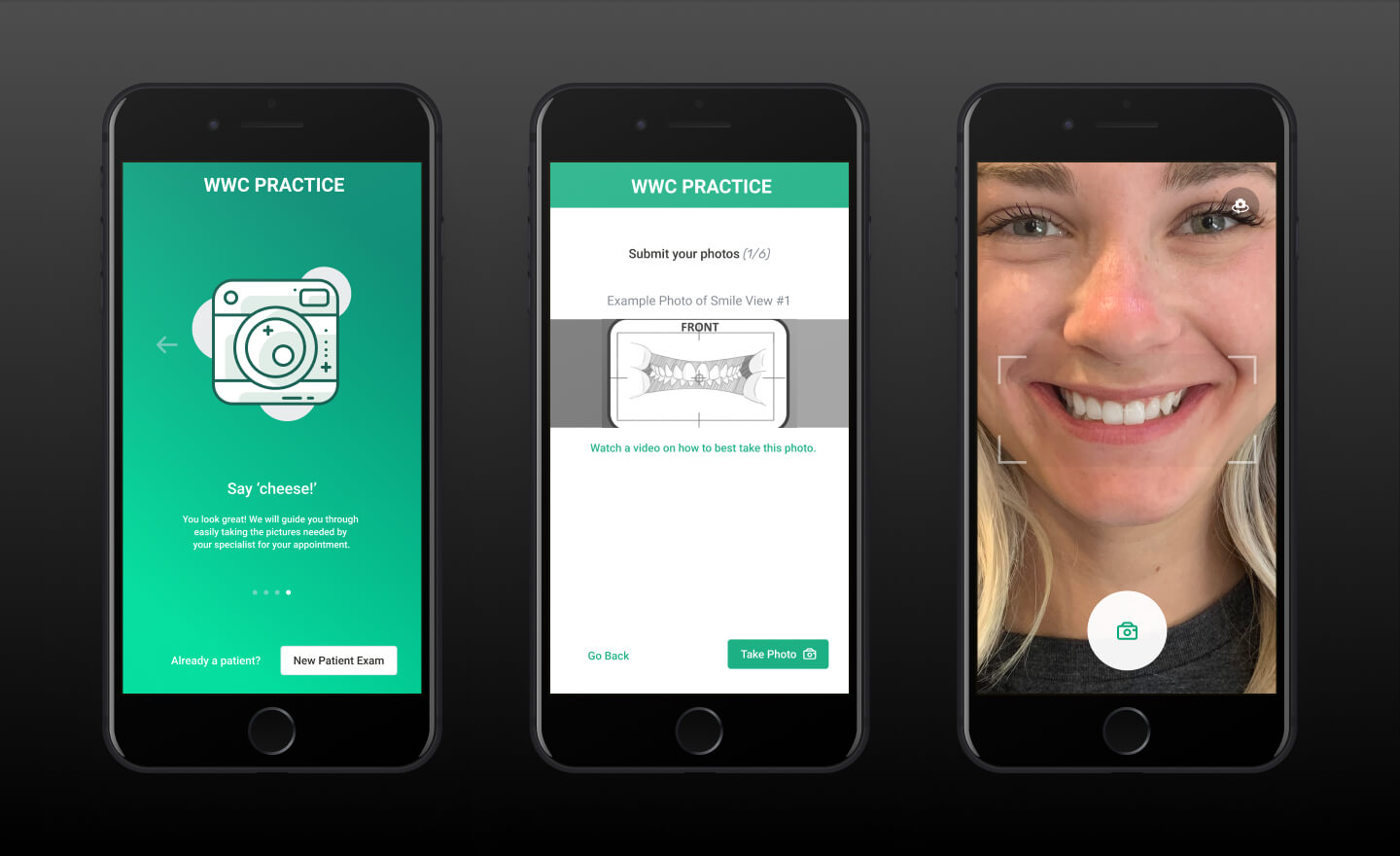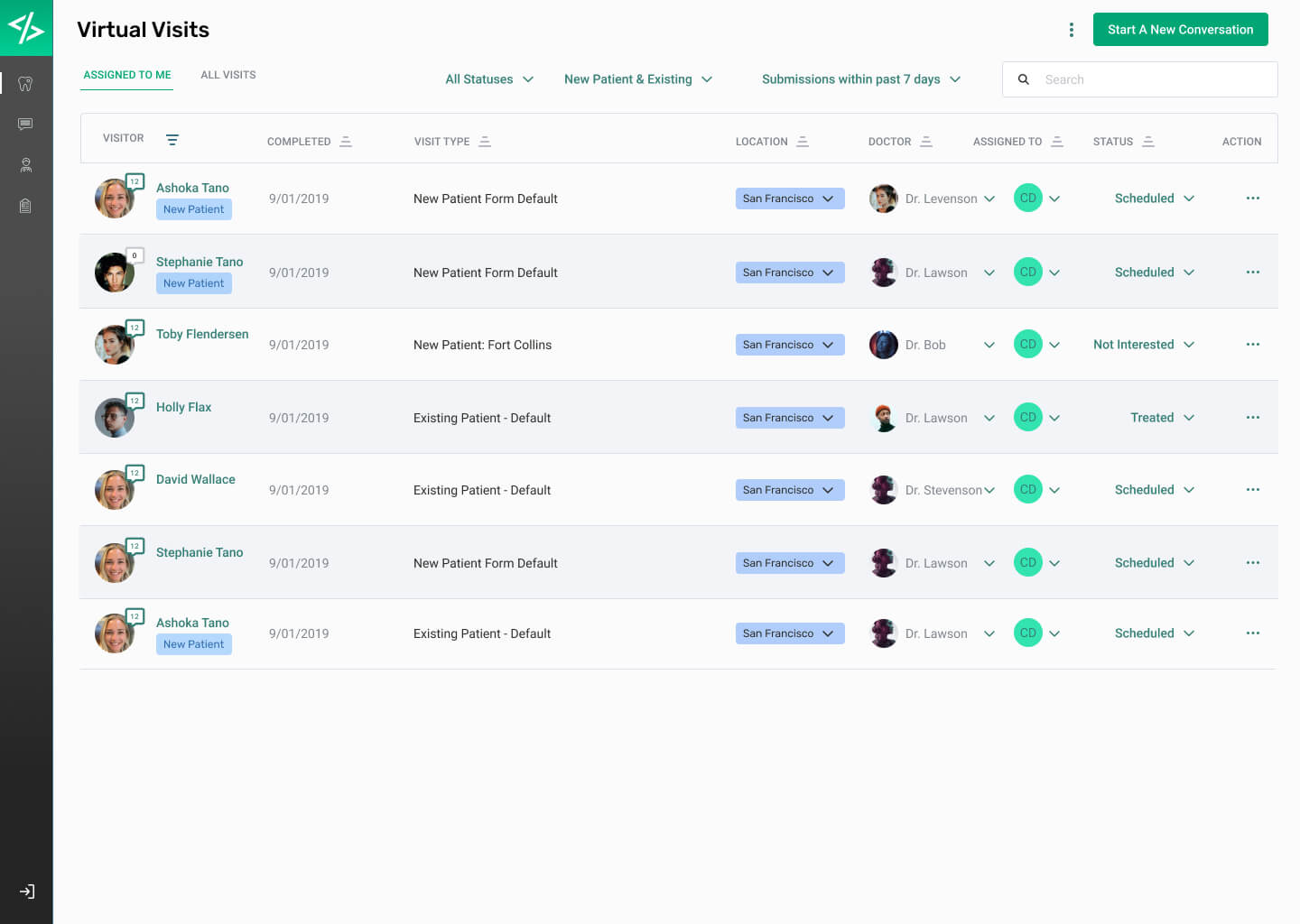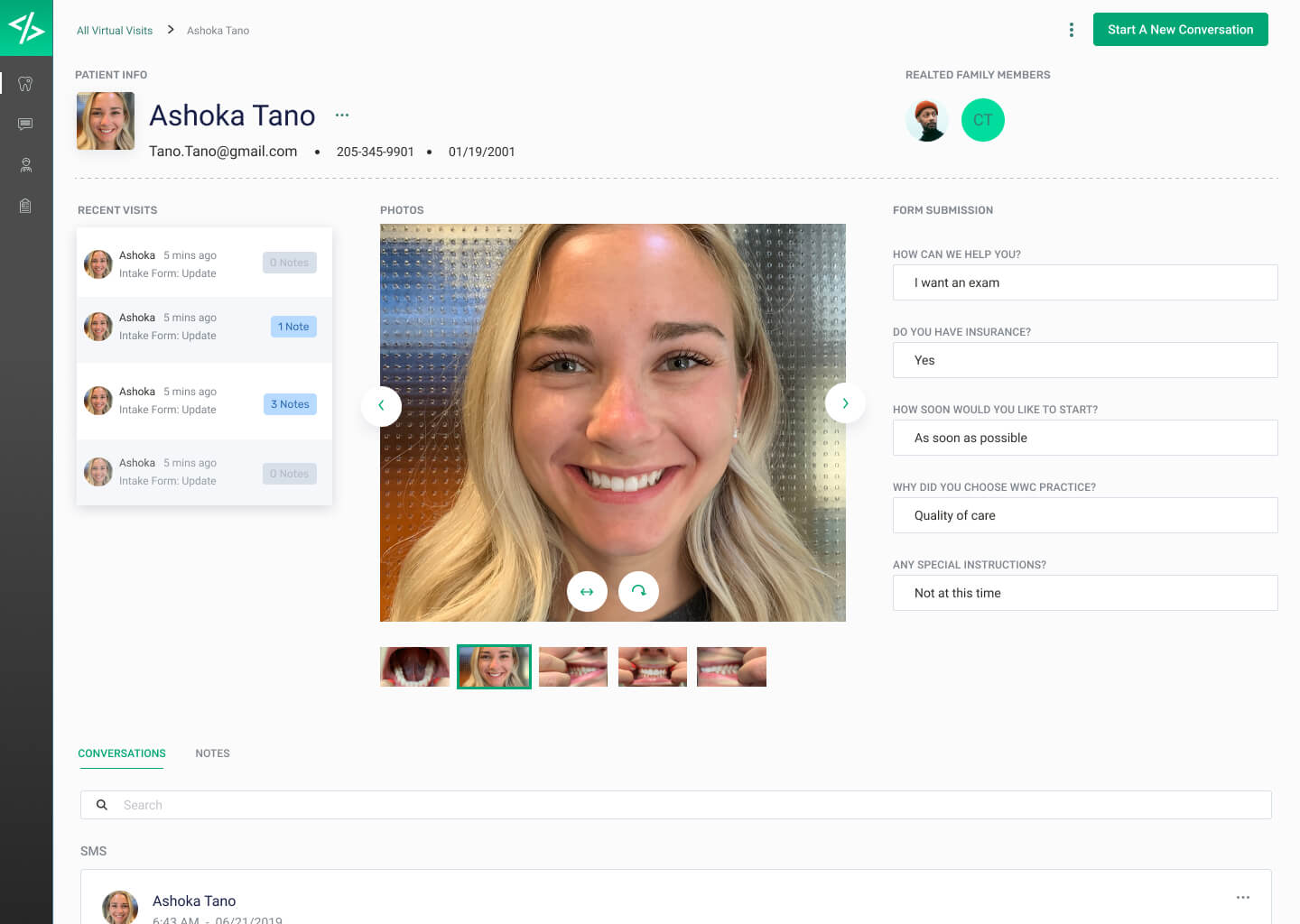Application Buildout for Virtual Doctor Visits
Overview
We collaborated with a telehealth company to develop a virtual visit application for streamlined patient consultations. Our team provided HIPAA-compliant, white-labelled applications for patients and healthcare providers, using Docker for efficient development. The application includes features like capturing photos of patient's teeth using WebRTC technology.
Solutions
- MVP Development
- Responsive Web App
- Camera Integration
Tech Specs
- Angular
- WebRTC
- Docker
- Twilio
- .Net Core
Intro
One of our clients is a telehealth company which offers their customers a suite of healthcare practice management solutions, leading the industry with their cloud-based software. The latest addition to the digital fleet: a virtual visit application. A virtual consultation saves both patients and doctors valuable time, not to mention the various other benefits telehealth brings to the table—especially during a pandemic. With timeliness being a huge driver, We Write Code was approached with an ambitious timeline and the knowledge that technical discovery and changing requirements would require continued flexibility from both teams. The primary goal was for We Write Code to assist their internal team to build HIPAA-compliant, white-labelled applications for both patient-side and practice-side.

Development Process
Working alongside our client’s team of developers and a UX designer, We Write Code provided a project manager and additional software developers to divide and conquer application features. Daily standup meetings, weekly demos, weekly sprint-planning, and ad-hoc video calls or chats kept our client tightly looped in and allowed the combined team to collaborate and operate the most efficiently.


By using a tool called "Docker" to containerize our full environment, local development could be up and running with just a few commands and minimal requirements on developer machines. Simultaneously running two MySQL databases, two Angular applications, an IdentityServer instance, .Net Core API, a mocked AWS environment, and an HTTP proxy server—Docker proved to be very powerful and provided an extremely reduced setup time by automating all system configuration.
Solution
One of the primary requirements of the application was capturing photos of a patient’s teeth. By using WebRTC, we were able to leverage built-in camera hardware for users on both desktop and mobile devices. Going even further, we targeted specific devices, sizes, and screen orientations to provide the best user experience possible.

They made sure to produce products that best fit our situation, going above and beyond to deliver.